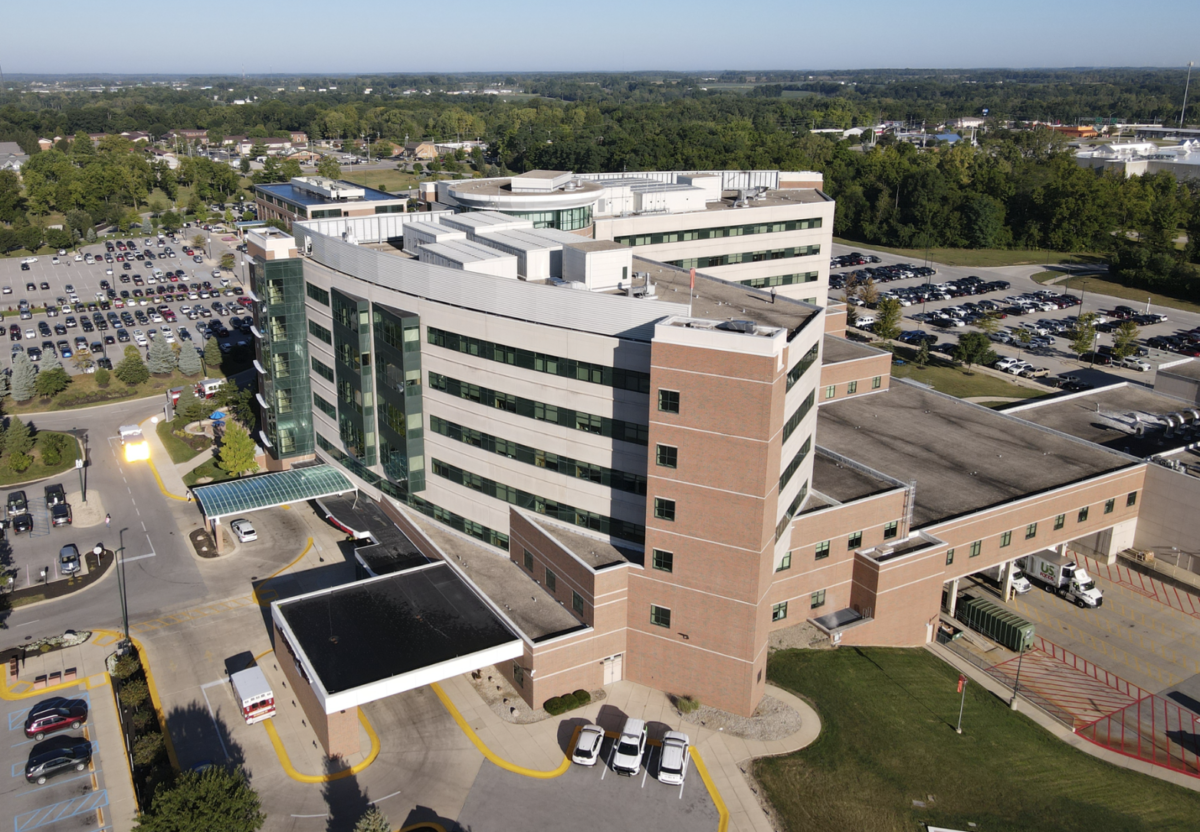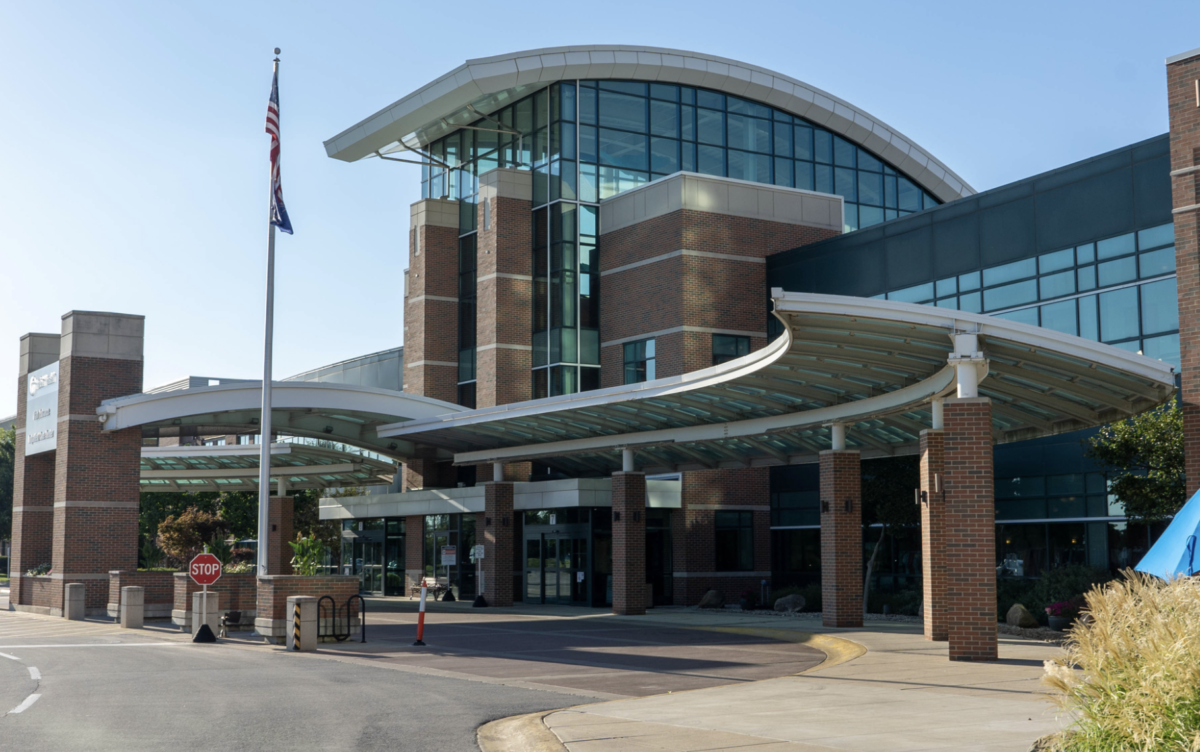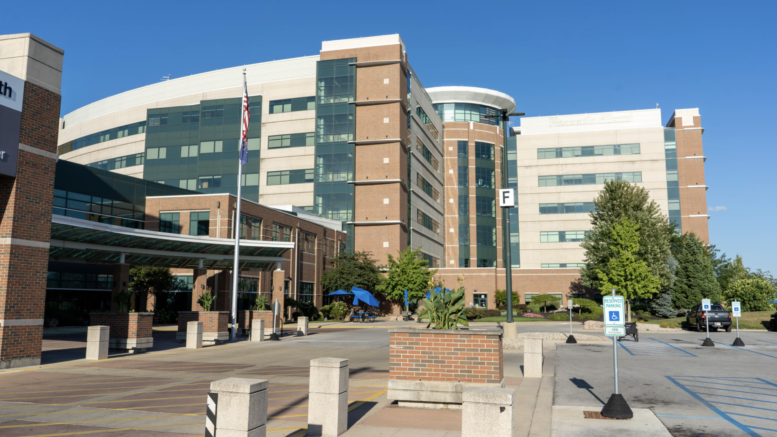A child is born in a hospital in southern Indiana, between Cincinnati and Indianapolis. It’s 2005. Proud grandparents snap photos on a disposable camera, hoping that the prints come out when they drop the film off at the one-hour photo processing spot later that day. The new mother works her way through the contact list on her cell phone, sharing the good news with friends and extended family, one call at a time. The new father thinks to himself that they left the DVD player on as they quickly departed for the hospital; maybe they’ll rent that movie again someday to finish it, but he figures they’ll be pretty occupied with the baby for the foreseeable future.
The example above shows just how hard it is to foresee the future — how would we know in 2005 how our everyday lives would change with smartphones, social media, and streaming video services within the coming years? Yet within that Indiana hospital 18 years ago, a decision was made as part of the main campus expansion that has stood the test of time. Jeff Cook, the director of engineering at Reid Health in Richmond, Indiana, made the decision to go with a built-up roofing system provided by The Garland Company and installed by local contractor AAA Roofing. Today, as Reid Health continues to provide more services to the area, patients entering the main campus receive world-class care under the same roof as those expectant parents did, nearly a generation earlier. Between projects, Cook took a few moments to reflect on the past 18 years of supporting Reid Health’s mission through outstanding facility management.
Unique Demands of a Hospital

“Any time you have a breach in a building envelope, you increase the risk of a hospital-acquired infection,” explains Cook. To ensure positive outcomes, notes Cook, “We keep the building envelope sealed up. Where we need positive pressure, we have positive pressure. Where we need negative pressure, we have negative pressure. What that means for patient safety and quality outcomes is huge. Any roof leak that lets water in can also let some of your pressure out. When a leak occurs, air handlers are working harder, ducts are working harder, all of that is energy consumption that doesn’t need to be there, because [when there is a breach in the building envelope] it’s like trying to blow up a balloon with a hole in it.”
David Finley, director of Building Enclosure Science for The Garland Company, agrees on the risks when a hospital’s building envelope is breached. “Generally, if you’re in a high RH condition such as hospitals, moisture-laden air can diffuse into your system at a pretty high rate, which can cause a condition called vapor drive and some pretty decent condensation problems.”
Cook and his staff at Reid Health understand the unique requirements of a hospital, the importance of having a watertight and secure enclosure, and the critical role the roofing assembly plays. “Our mission statement — delivering quality care one person at a time — is a real goal, and a real commitment to all the communities we serve. There are a lot of things that go into building a new hospital and the roof is one of the most important elements. It starts the building enclosure. If the building enclosure doesn’t work, then nothing works. At the end of the day, if I’m not worried about the roof, I can sleep at night.”
Cook’s approach stands in contrast with facility directors who wait for issues to arise. “Over the course of my career, I’ve seen cases where people neglect their roof,” Cook says. “People let it go and say ‘it only leaks when it rains, and it only rains 100 days a year, so the other 265 days I’m good.’ They’re destroying the underneath of the insulation, they’re destroying whatever’s inside the building, one rainstorm at a time. That’s not the way to operate a building at all.”
In 2005, Cook’s knowledge and experience of building science, and his commitment to Reid’s mission, were utilized in full when construction began on a new main building for Reid Health, and a new roof needed to be specified.
Background of Reid Health

In 1903, industrialist Daniel G. Reid took some of the wealth he had earned from the railroad and steel industries, and donated the funding required for the construction of a hospital, which opened in 1905. After almost 100 years in that original location, leadership at Reid Health determined that the most cost-effective and quality -driven option would be a new facility. Ground was broken on the new facility in 2005 with primary construction completed in 2007.
Cook oversaw the construction project, stating, “I get asked sometimes about my legacy. My legacy’s done. I’ve got it. It’s here. This is my hospital. This is my building. I just let Reid borrow it.”
With a project of such ambition and scope, every decision was crucial. Cook explained the decision to specify a built-up roof from Garland, as recommended by Garland rep Rick Ryherd and installed by Indiana-based contractor AAA Roofing. “While there were opportunities to get some value savings and value engineering, we specified a Garland built-up roof. Rick Ryherd has been a great partner of Reid for my entire career. Whenever we need them , they’re right there.”
It didn’t take long for the new roof to be put to the test. “Literally the first weekend we were open we had hurricane-force winds,” recounts Cook. In addition to wind and extreme weather events, southern Indiana faces day-in, day-out temperature fluctuation throughout each year, with lows dropping as low as -20 degrees Fahrenheit, and common daytime roof temperatures reaching 105 degrees in the summer months. Says Cook, “The roof just stands up. It’s not something I really even worry about.”
Opportunities and Enhancements
With the roof taken care of, Cook and his team have taken on a number of projects to improve energy efficiency, patient care, design aesthetics, and more.
Energy efficiency and reliability has been a priority. Lighting has changed from compact fluorescent bulbs, which were state of the art when the building opened in 2007-08, to 100% LED lighting, improving energy efficiency. Cook has also overseen the construction of a generator facility that allows the hospital to be self-reliant for electricity in the event of a storm or other power outage.
As Reid has grown, maximizing and optimizing available space has also become a consideration for the engineering team. Cook keeps a moving truck on site to handle the near-daily opportunities to move offices and equipment to more optimal locations for patients.
Lastly, Cook and the leadership team at Reid have stayed ahead of ever-changing trends in health care facility design, as well as day-to-day maintenance, successfully keeping the hospital looking like new, even as it nears its third decade in operation. “If I’m not worried about the roof, I can focus on a hole in the wall, or changing the hallway carpet to vinyl floor, versus worrying if it’s going to rain and getting the buckets out.”
That isn’t to say that the roof’s condition has been perfect every day over the past 18 years — but having the right partner has been valuable when a penetration has been spotted.
“There’s a lot of traffic that gets up on the roof with the air handlers, elevators, and exhaust fans,” Cook says. “A screw here or there can lead to penetrations. It’s those kinds of things that we take care of really fast, and it doesn’t become an issue. If there was an issue, right now, right this moment, I have no doubt I could pick up the phone and call either Garland or AAA and I’ve got a crew here in 35 minutes to an hour, and they’re going to take care of Reid, every single time.”
A Trusted Partner for a Trusted Provider
Reid Health has delivered outstanding care and outcomes for the residents of Richmond, Indiana and its surrounding area since 1905. As the hospital neared its 100th anniversary, construction began on a brand-new facility. Thanks to the diligence, hard work, and smart decisions of the Reid Engineering team, that facility continues to look and run like new, with a roof that ensures a leak-free environment and helps maintain correct air pressures throughout the building.
Reid’s mission statement — “Delivering Quality Care One Patient at a Time” — demonstrates that the most important patient is the next one. When the building envelope is taken care of, Reid’s facility team can focus on energy efficiency, aesthetics, space optimization, and more, rather than leak response, and successfully help its doctors and staff deliver on that vital mission.
TEAM
Roofing Contractor: AAA Roofing, Indianapolis, Indiana, aaaroofingcompany.com
MATERIALS
Roof System: Garland Gravel Built-Up Roof System, The Garland Company, Inc., garlandco.com


Be the first to comment on "Reid Health’s Roof Still Protecting Hospital’s Environment — 18 Years Later"